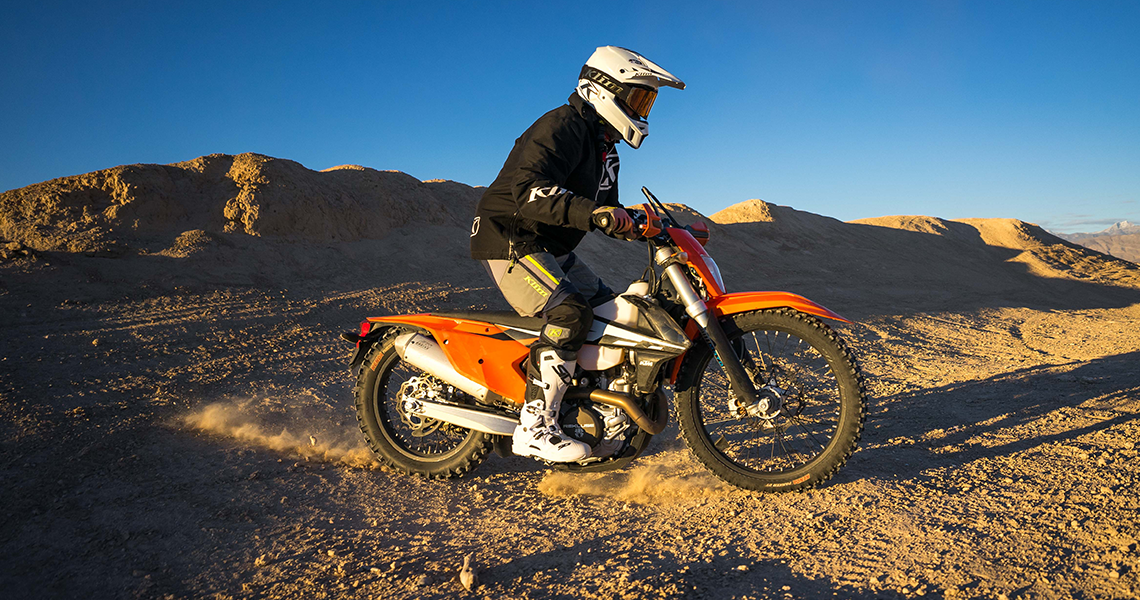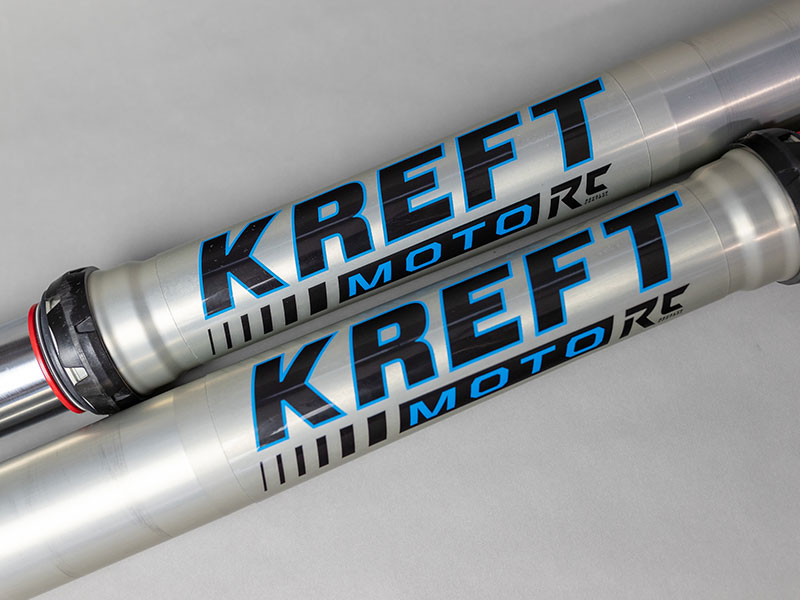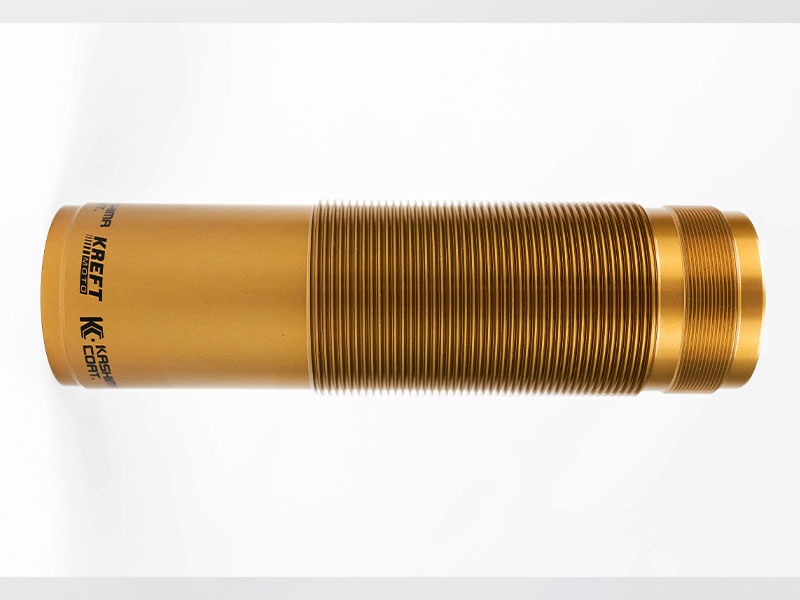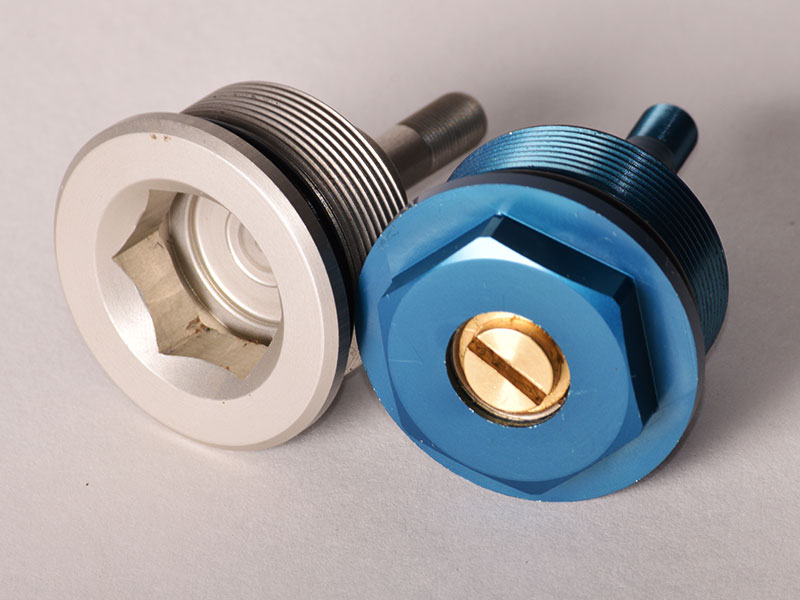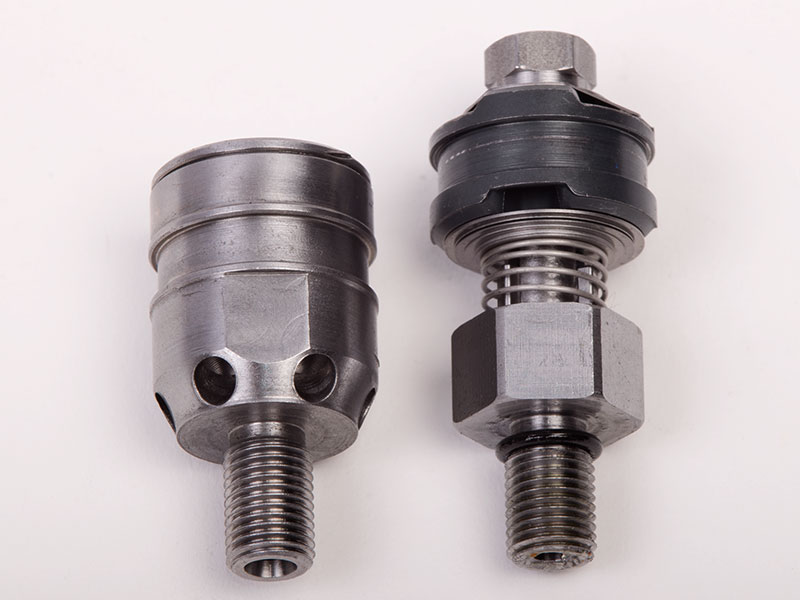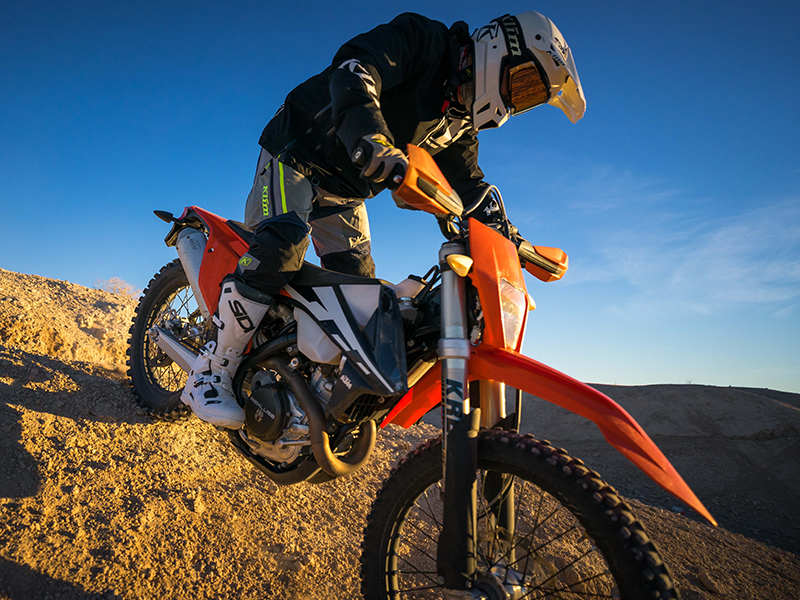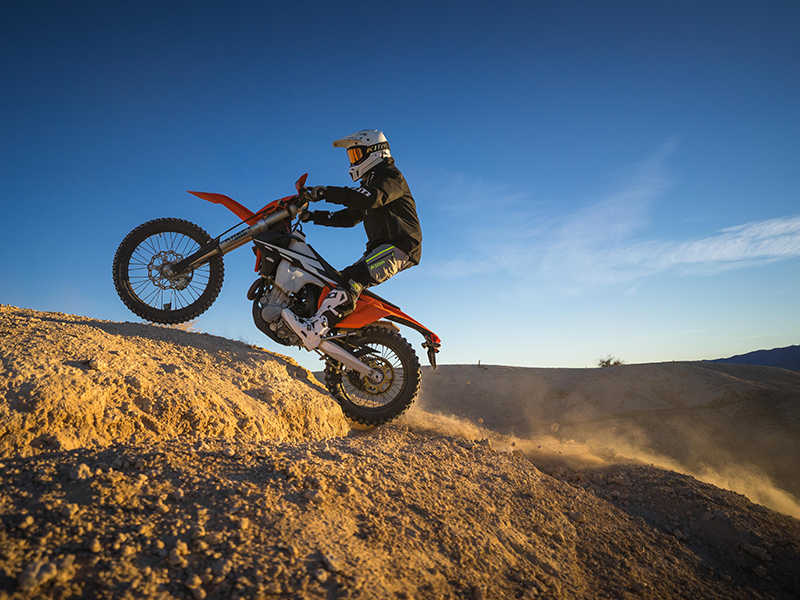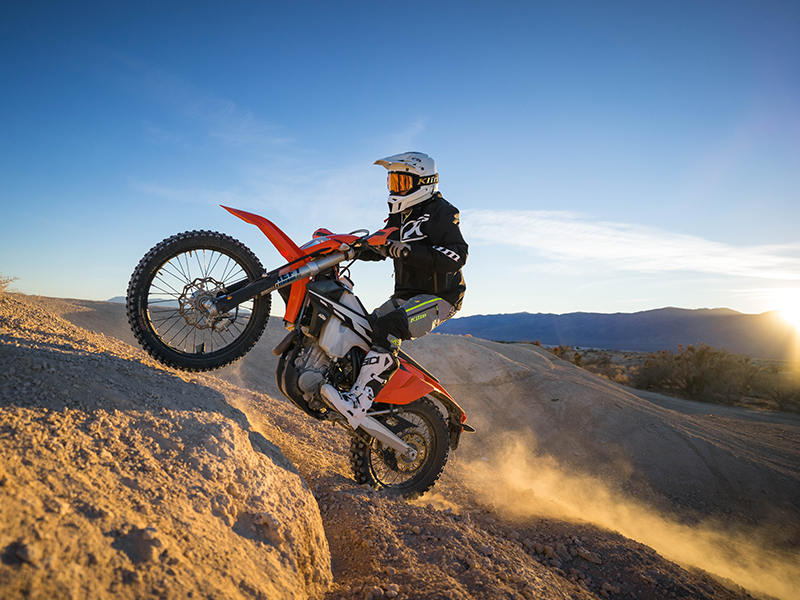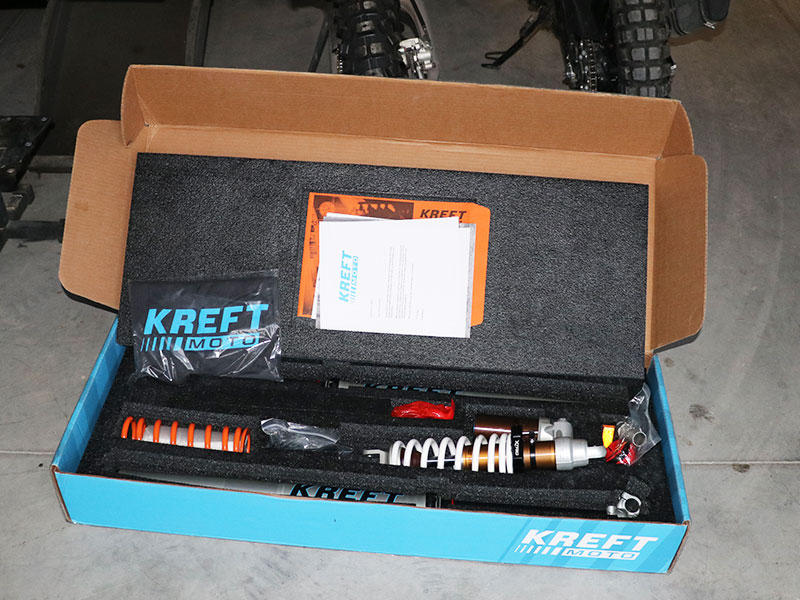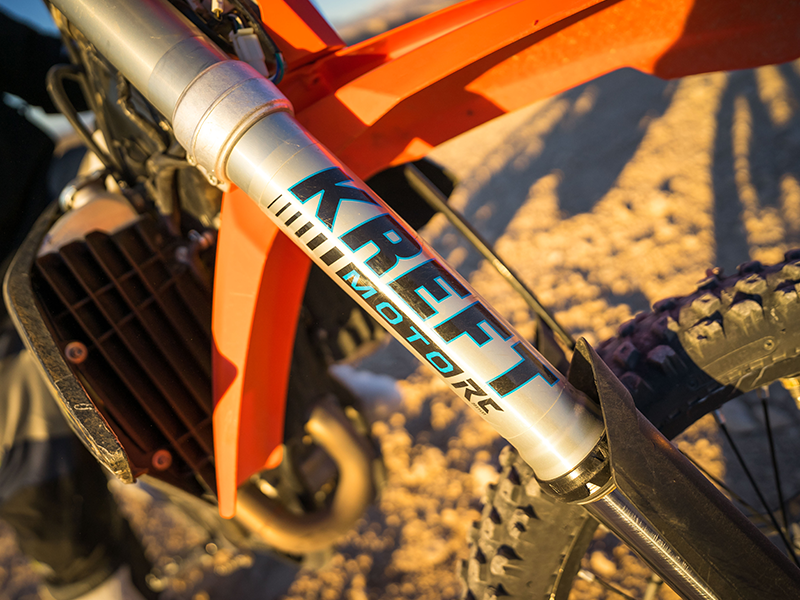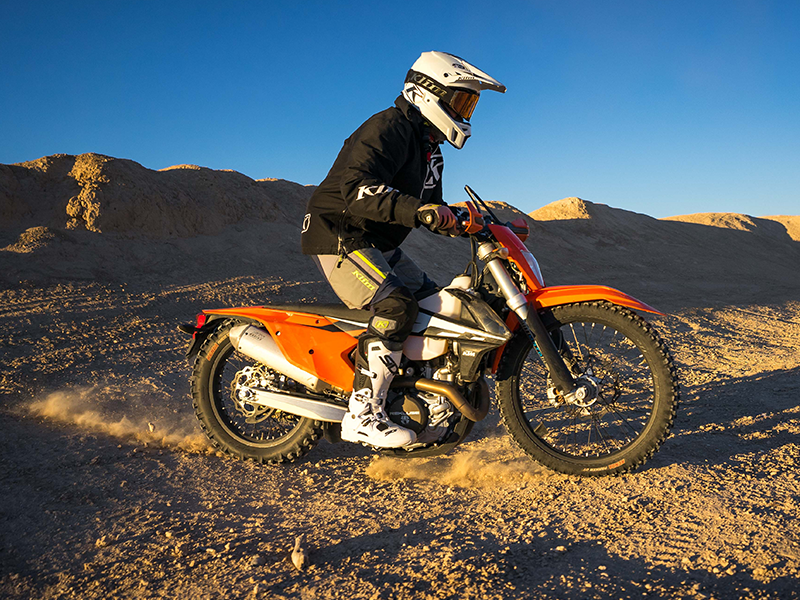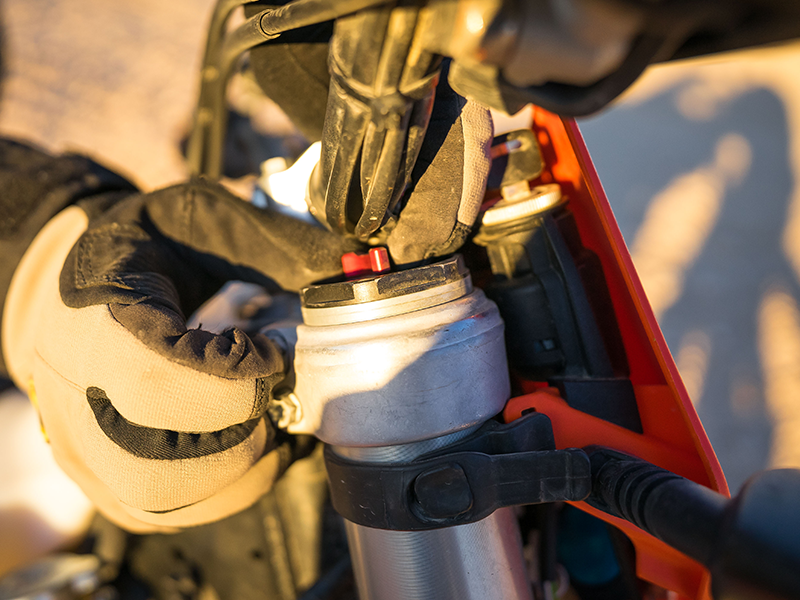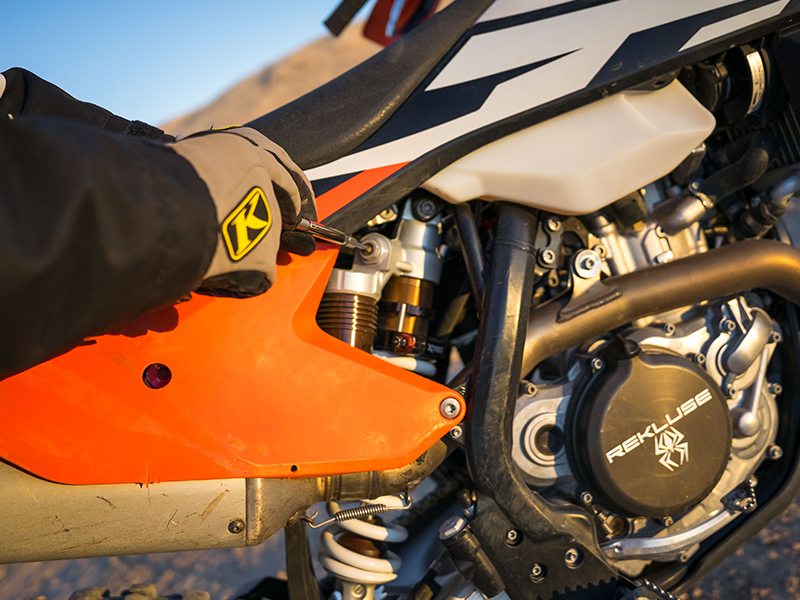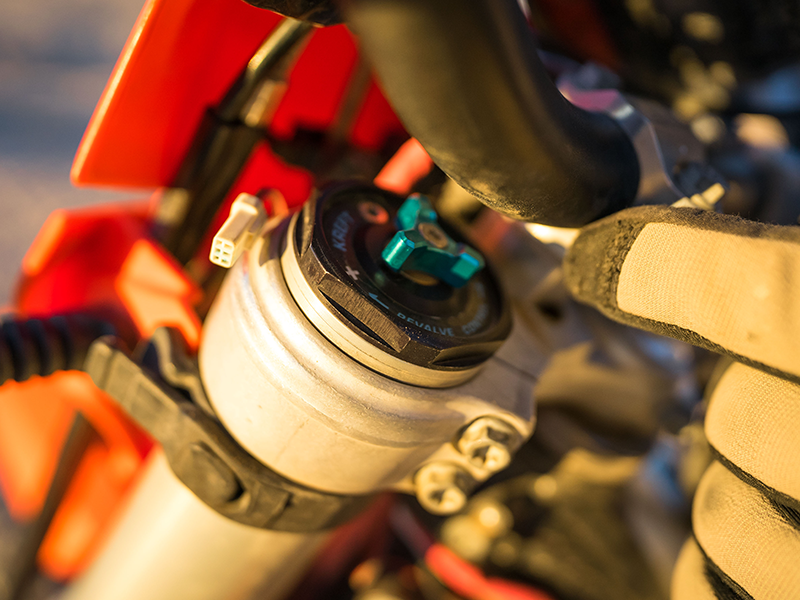Kreft Suspension
Company: Kreft
Price: $2,200
What it is
- Kit level suspension for your WP XPlor components
- Custom set-up for you.
Kreft Moto is a suspension engineering company specializing in WP equipped KTM, Husqvarna and now Gas Gas motorcycles. The company claims to use a scientific approach and the latest suspension development technology staying focused on the bikes they know and ride.
Kreft did a full “kit” suspension upgrade to a set of standard forks and a shock off of a 2019 KTM 500 EXC for us. It included the company's ReValve Control which is said to be an external revalve system. Through a clicker, it is said to accomplish the same thing that a suspension tuner does when he disassembles and revalves your suspension, except ReValve Control does it in a few seconds. The Kreft system converts the XPLOR 48 fork into a high-performance damper said to be capable of adapting to any terrain and any rider - from beginner to pro.
It redistributes damping duties equitably between both fork legs, uses a low-speed compression adjuster circuit, and overhauls the valving configuration in line with Kreft standards: firm but plush. The claimed benefits: plush response to sharp impacts at speed (no more high-speed deflection), a properly balanced chassis, reduced brake dive, improved cornering speed, and control through more consistent damping performance due to reduced cavitation and hysteresis.
The suspension is returned with a suspension settings table to help you get the most from the ReValve Control and other clickers with clear guidelines on how to tune for varying terrain and ability levels.
The XPLOR PDS shock is known to some to have limitations, including Kreft. They consider it a solid platform for development. On the shock they were able to successfully address each problem area without the need for a major design revision (as was required for the XPLOR fork). The Kreft XPLOR PDS shock setup includes the following modifications which were designed to be paired with the Kreft XPLOR ReValve Control fork: Installing a dished main piston creates a solid platform for aggressive riding, reduced high-speed compression for square-edge bump compliance, a rebound damping curve designed to control top-out motion without causing packing, and a high viscosity-index shock fluid for heat stability.
On our shock, we opted for the following upgrades as well: Optional Performance Upgrades
Centrifuge XL Reservoir ($225), Kreft Moto Premium Shock Body ($150), Shock spring (depending on rider weight) ($120), Shock shaft Microfinish ($50), and XTRIG Preload Adjuster ($190).
How it works
- First-class customer service and presentation.
- The stock components are transformed into parts that work like kit suspension without too much of the look.
- Clicker adjustment, especially on the forks, is enhanced.
- ReValve control does exactly that, gives you re-valve results with a clicker adjustment.
The first thing you will get from Kreft is first-class customer service. It is like a high-end restaurant, there is more to it than just the food. You get a consultation from a Technical Support person that gets your info and asks the kind of questions that will help them determine the direction for your re-valving and things like springs or other upgrades for your suspension. It is more than height, weight and what class do you ride? They ask the right questions, I know because I’ve been doing this for a long time and i armed them with enough information to get as close as anyone could without actually watching you ride.
Next, if necessary, a shipping box arrives with pre-cut sections for your suspension to be sent to the Bend, Oregon headquarters for the work to be performed. Turn-around time is dependent on the season and workload--ours was a week off the bike, of course most of that was in the shipping.
The suspension arrives back in the box but it was almost all-new. Especially considering the extensive work we had done. Kreft wanted to showcase the capabilities of there products and basically turned a set of stock KTM XPLOR suspension into Kit Supsnsion, less some of the fancy external coatings. They return all of the old parts and there are a few of them including cartridge parts, shock reservoir and body, seals, bushings and piston. There is a good set of instructions and a setting chart personalized for you.
So we bolted it on and took the bike out for a ride. Now I’m one of the few vocal people who actually like the stock suspension on the KTM EXC bikes for the most part. I understand and know the PDS shock and how to set it, ditto for the fork, even the newer ones with separate functions on each side. I do not feel that for trail riding they require that much work, aside from simple setting, to work adequate. They are not perfect and they do have some downfalls. If you asked a regular rider what the issues with the performance of the fork were, there would not be a consistent answer aside from that they had read on the internet. So I’m a tough customer for a revalve, especially for a company not having worked with me before.
I asked for a more progressive than stock damping character, especially getting into the mid-stroke and to limit bottoming (make it a little better than stock) without giving up the supple initial character. I feel the stock fork and shock are mostly balanced, a little soft initially, a little too springy for most of the stroke but have good bottoming resistance. You can use the clickers and oil level in the fork specifically to improve some of this but you will run out of the adjustment you want and into causing another problem in suspension’s character.
Right away the Kreft fork was a hit and the shock felt balanced in matching it for everything but the bottoming. The suspension has better hold up, more damping control and what I call a “dead plush” feel that you get from Kit or Factory suspension components. It feels like there is no stiction or binding in the movements but in no way is it accomplishing this by being soft or springy. There is always damping and in both compression and rebound directions. It has a stiffer nature but it does not feel stiff like heavier springs or cranking in on a compression adjuster.
But the shock bottomed more than stock for me and this was an instant no-go in my book, especially since everything else was an improvement. Initially, Kreft felt that I was using the bike in more “desert” conditions than they felt I described and it took two return trips for the shock to come back with the correct amount of bottoming resistance I wanted, putting it back to a stock-level or slightly more bottoming resistance. It may be a significantly higher level than stock because the whole setup is stiffer, so getting to the bottoming inside the shock may take more force. Or since they are controlling the upper part of the travel more, maybe they can get away with less damping (or less distance) on the second piston on the PDS system where it travels into the cavity at the end of the stroke. Strong bottoming control is one of the characteristics I like for a safety feeling and I’m very picky about it, especially on PDS setups. I may have been off the scale for Kreft’s normal customers, but after two rounds of shipping the shock back to Kreft, they got the setting correct. And it does often take multiple re-valves from any suspension tuner when someone has special needs. I’m one of those on suspension and the guys I regularly work with already know this. These are the reasons you seek out suspension tuning in the first place, to make your suspension work for you.
Now performing the way I wanted, I was able to go out and feel the way the ReValve Control worked and get a grip on the improved functions of the clickers. I feel the stock KTM clickers on the forks work more off the mid-speed valving and not really the low-speed. Kreft makes the compression and rebound clickers much more of a low-speed damping so you can feel them and most riders felt a two-click change. I didn’t feel the need to venture much from the standard setting they delivered the fork with for desert riding. Now you have the range to make the fork feel very different in the first ⅓ of the stroke with the clickers all the way to making it feel horribly soft and hard at either end of the clicker’s range.
The ReValve Contol clicker, to me, feels like a true mid-speed adjuster. And on most forks, this would require a re-valve to accomplish. (Of all the forks, the stock KTM clicker is most like a mid-speed adjustment by my feel but you do not have low-speed adjustment.) So you can basically allow the fork to move more freely or stiffer for the first ⅔ of the stroke with a simple turn of the clicker. It takes a few clicks for even the most sensitive rider to really notice the feel, yet the handling of the bike seems the most noticeable change. It has a pretty profound effect on the in-motion ride height of the front end, like adjusting the spring preload while riding. So in conjunction with using the low-speed compression and rebound you can get a much more significant overall change in character without going inside for a revlave. Moving the ReValve Control alone did not seem like a one-step solution in going from a desert or more MX style setting to something you would prefer on a trail ride, you have to adjust everything to get it proper. My settings seem to favor less ReValve Control clicks and compression clicks than my recommended chart suggested to match where my shock was.
Once the bottoming on the shock was dialed in, the rear continued to be balanced with the fork and likewise took very little clicking around to come to a final setting. The clickers keep the same characteristics and range that they had when stock. The shock is stiffer overall, but like the fork, not harsh on small bumps or chop. It remains up in the stroke where the stock shock rides a little deep. Like the fork, it has that dead-planted feel that you get from kit suspension.
The XTRIG preload adjuster makes setting and changing the sag a very quick and easy job and for testing, it makes the task much more simple since we tend to try a lot of different levels for different riders. Specifically in this bike's case, with its use including adding soft luggage every once in a while, this part becomes even more practical.
Overall, the Kreft valving and parts transform the standard WP XPLOR components into very high-level suspension with overall performance that is actually better than any off-the-shelf kit suspension I have tried. Right from the start, this is at least set up for your type of riding based on the input you give the technician. The clickers now give you options to fine-tune with adjustments that work way beyond what you can do with the stock components. The price is steep, close to $2200 when done in Early 2021. For reference, kit suspension will set you back close to $4500 before you begin to have it set up for you. The entire customer experience is excellent and you feel like you are getting first-class treatment. In the time I've been riding the suspension, it has performed to a level that really reveals the weak points in the stock components whenever I ride them back-to-back. Additionally, it has a range of use that is much wider than standard. Yes, with clicks I could take my EXC to a motocross track and be comfortable. If you wonder what factory suspension would feel like for a KTM EXC, XC-W or Husky or Gas Gas non-MX bike, this is it.
Leave a Reply

